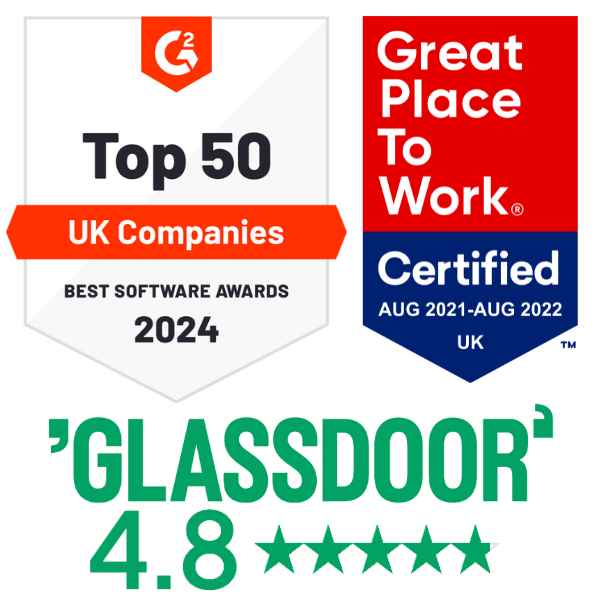
When correctly implemented, an employee advocacy program can make a remarkable impact on maximizing your brand’s reach and driving engagement, and your employees can prove to be one of your most valuable assets.
Before implementing a program or deciding on a vendor, you must consider the elements and features that will play a pivotal role in its success. Not every vendor will offer everything you need, so here’s a helpful list of what we believe to be the essential success-driving features of an advocacy program.
The 5 Key Elements of an Employee Advocacy Program

1. Incorporate Gamification
Gamification is one of the most effective ways of getting your employees to both share and create content. It will also entice users to join who might otherwise have been skeptical about using the platform, as it generates something of a buzz within an office environment and raises awareness about the initiative.
Gamification makes the process fun by incorporating leaderboards and rewards. Employees want to be seen to be performing well, and the friendly competitive nature of winning will encourage further activity within the platform.
Rewards could be anything from Amazon vouchers to charity donations. A brand that championed this is Chinese tech-titans Huawei, who launched an advocacy program with DSMN8 back in 2018. They offered up their latest smartphones as rewards for top-performing employees, along with shopping vouchers and exercise-tracking accessories. Read the full Huawei case study.
Pro tip: If you’re a larger company, incorporate smaller team-specific leaderboards to maintain motivation and incentivize participation.

2. Content and User Segmentation
If you’re a larger company that operates in various corners of the world, or if you have various/very different departments within your company, then you’ll want to consider segmenting content and assigning team leaders to specific regions and departments.
In doing so, you are ensuring that users have localized content that is relevant to them and their networks, no matter their role, language, or geographical location. You want users to be sharing content within their professional networks that will be relevant to their connections and followers. If you’re a global company, you don’t want to have UK-based employees sharing, say, German content.
It’s also worth considering employees who may be members of a few different teams in various parts of the world. You want to make sure that they can easily switch from viewing one set of content to another.
You are also evenly dispersing the workload to ensure that the platform does not become a time-consuming burden of one admin user. After all, that one user may not specialize in all departments, and you don’t want the global admin managing users and content that they may be unfamiliar with.

3. Executive Buy-In and Participation
Getting senior leadership involved in your advocacy program can be essential to its adoption, and ultimately its success, as they will have significant influence over the rest of your staff.
This is because employees are more likely to get involved when they see influential/senior members of staff actively participating, so it’s vital that they not only participate but also lead by example.
It’s not only employees that senior leadership staff will have more influence over either. In 2019, C-Suite executives are just as much a part of a company’s brand as they are an employee, and so people view them as peers and as people worth following. They’re also more likely to have larger networks that contain other senior members of staff, whether from the same company or not.
It’s worth noting that if employees see executives aren’t participating in the program, or perhaps not as much as others, they may be inclined to believe that the initiative is either not working or isn’t all that important.
Pro tip: Leverage the power of your executive staff by asking them to send initial communications via email.

4. A Strategic Onboarding Strategy
Whether it’s regional, departmental, or nation-wide, you must have a strategic plan in place to begin your launch and on-board users. Opening communications will prove to be an effective way of getting employees both excited and curious about the initiative before you start a company-wide rollout. It may be a few emails a couple of weeks before launch, or some mentions of the program via internal comms tools, but it’s crucial to make signing up to the program as easy as possible.
Sending out sign-up/registration links via email has proved an effective way of doing this for clients at DSMN8. These can then be followed by a comprehensive induction and full training sessions.
This would be another chance to leverage the influence of senior leadership by asking them to send out emails or announcements via internal comms tools or via email. However you choose to do this, it will prove to be a great way to boost familiarity and maximize adoption rates.
Getting sign-ups through registration forms is critical, but retaining existing users is equally important. The best way to keep users engaged is with continued engagement and support. Engaging with users can be as simple as sending content updates to let them know when new content is available to share.
Performance updates can be equally effective as they incentivize users to share and create more. If an employee is performing particularly well, it would be a good idea to let them know and to commend them for their performance. If your platform offers a mobile application, it would be wise to send out emails prompting users to use the mobile version of the app. For a lot of users, it will seem more accessible and increase activity.
Pro tip: It would be a good idea to have a communication plan in place for when users sign up to make the retention process a little more straightforward.

5. Produce Authentic and Unique Content
Unique and authentic-looking content is a must-have for any employee advocacy program. Platforms like DSMN8 enable admin users to include multiple imagery and post copy. This enables the syndication of content at scale in a unique way.
Most users are very in-tune with traditional influencer marketing tactics, so it’s essential that your content and employees’ sharing looks as authentic as possible.
Naturally, a lot of your employees will share connections in their professional networks, so by adding multiple images/post copy; you are removing the possibility of duplicated content across different employees’ feeds, which removes authenticity and validity in the eyes of their networks.
Consider here Netflix’s method of increasing engagement rates. Netflix doesn’t just use a film or show’s original poster artwork; it employs an algorithm to source high-quality images from those films and TV shows. Netflix then does more testing to determine what each user is then most likely to click on.
Apply a similar logic to your content, and you’ll realize that not every image/post copy will resonate with each user in the same way. Having an option to customize these and create multiple unique text copies will ensure that your content looks as authentic as possible when shared.
Pro tip: Adding just five alternatives for images, post text, and preview title creates 125 unique content previews.
Most vendors won’t be able to guarantee each of these elements, and one or two will be entirely dependent on the team that handle the launch process. Getting executive buy-in, for example, will fall on the company to arrange as opposed to the vendor.
However, those are the five essential elements that you need at the core of your employee advocacy program. Hopefully, with these taken into consideration, you now feel a little more confident in selecting a vendor to implement a program for you.
Ready to get started with employee advocacy?
Prefer to speak with us first?
No problem.
Schedule a call with one of the team.
Lewis Gray
Senior Marketing Manager and Employee Advocacy Program Manager at DSMN8. Lewis specialises in content strategy, growing brand visibility and generating inbound leads. His background in Sales lends itself well to demand generation in the B2B niche.

